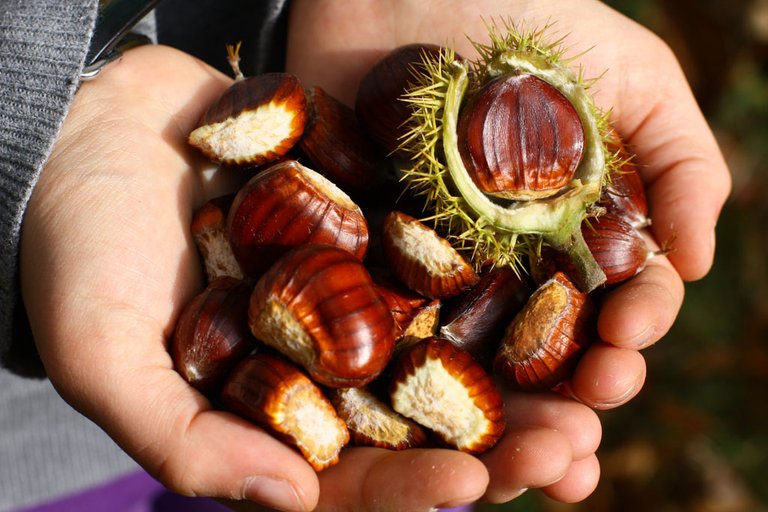Why chestnuts are good energy boosters?

What was once considered a meal of the poor, is finding its way to fine cuisine. Chestnuts can be found at local stores as soon as the colder seasons come our way. Most of us know them as delicious snacks that we find at christmas markets, where the familiar smell of them being roasted in large pans fills the air. They not only are a popular food in winter, they also contain a diverse variety of effective nutrients!
The chestnut tree’s harvest, which blooms between September and November, bears many elements that strengthen us in winter and promote our well-being. In comparison to other nuts, chestnuts contain very little carbohydrates and very low amounts of fat. Instead, they contain a large number of vitamins and minerals, of which some are iron, magnesium, calcium, phosphorus, zinc – which are vital for our organism. They are the only type of nut that contains vitamin C, which is not only good for our blood, but it also strengthens our eyes, teeth and our immune system. The ultimate bonus is yet to come: chestnuts are gluten-free, which make them easily digestable by all of us! Other gluten-free nuts are almonds and hazelnuts.
Are you becoming interested in trying to cook chestnuts at home? If yes, we have good news for you – as we have the perfect winter recipe for you. Take a look at our recipes and try our gourmet-interpretation of chestnuts: a chestnut-walnut terrine on saffron foam.
What to look for when buying them: you want large and fresh chestnuts, that have a shiny, smooth and dark-brown surface. Another indicator of good quality is their weight: them being heavy points to them having an ideal interior.
When it comes to storing them, chestnuts should be treated like vegetables; they go bad quite quickly. Therefore it is best to store them dry in air-tight packaging. If you keep them in your fridge or basement they may last up to three months!
Bon appetit!
